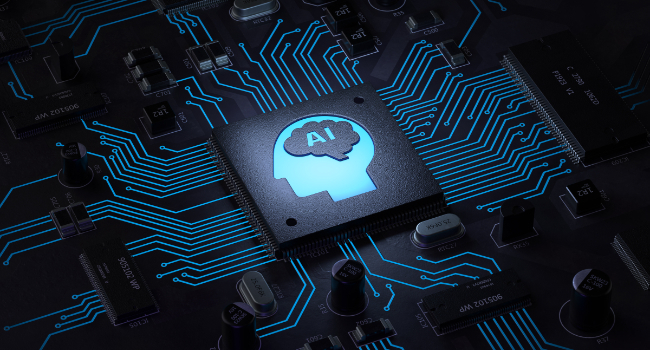
The Critical Missing Piece
- By Alejandro Ramirez de Arellano
- Jul 22, 2024
As technology advances, security programs have invested heavily in advanced systems and sensors. These sensors generate massive amounts of data, often overwhelming the security teams tasked with monitoring them. AI technology promises to sift through this data, using logic and reasoning to differentiate potential threats from non-threats.
Despite the buzz around AI-based analytics, few security programs have effectively implemented these solutions at scale.
Benefits of AI-Based Threat Monitoring
Implementing AI-powered threat detection offers several key benefits:
Proactive threat detection. AI rapidly identifies potential threats, allowing quicker intervention.
More accurate than human attention span. AI monitors data continuously, unaffected by human fatigue or attention span.
Enhanced accuracy. AI minimizes false positives, ensuring only genuine threats trigger alerts enabling faster and more effective responses to real threats.
Resource optimization. AI allows security teams to focus on real threats, leading to efficient use of resources and enhancing overall security operations.
Improved incident response. AI provides real-time analysis and alerts, enabling quicker decision-making and mitigating potential threats before they escalate.
Scalability. AI systems can handle increasing data volumes, ensuring consistent performance.
Start with the Nail, Not the Hammer
Starting with the problem you are trying to solve ensures that the AI solution you choose directly addresses your specific security needs. By understanding the exact threats, their frequency, and their impact, you can select the right sensors and analytics that effectively mitigate those risks.
Threat identification. What specific threats are you facing?
Frequency and severity. How often do these threats occur, and what are the potential consequences?
Patterns. When and where do these threats typically happen?
Sensor types. What sensors are necessary to detect these indicators accurately?
Installing AI-based Analytics is Only Part of the Solution
Implementing an AI-based solution requires an integrated approach that includes detection, analysis and response. Most vendors address only one part of this puzzle, leaving security leaders to piece together systems.
This fragmented approach overlooks the necessity of a system that seamlessly works across all phases, ensuring effective integration and coordinated response.
Striking the Right Balance: High Accuracy vs Noise
AI excels at monitoring for extended periods and identifying incidents within large datasets, outperforming human capabilities in these areas. However, AI is not perfect. Tuning AI for higher accuracy minimizes missed incidents but increases false positives, requiring human analysis to confirm.
Adjusting AI for lower accuracy reduces false positives but raises the risk of missed incidents. Should the vendor be responsible for this trade-off, or should each security program tailor it?
Efficient Human Verification: The Missing Piece
Despite AI's capabilities, human verification remains an essential component of effective threat detection. Human operators provide the contextual understanding and nuanced judgment that AI lacks. Combining AI's analytical power with human insight enhances the accuracy and reliability of security operations. AI should complement and empower human effort, not replace it.
Human verification serves as a crucial fail-safe, ensuring that only real threats are escalated for response. This constructive collaboration between AI and human oversight creates a more robust security framework, reducing the risk of missed threats and ensuring timely, appropriate responses.
Best Practices for Implementing AI-powered Threat Monitoring Solutions
To maximize the benefits of AI-powered threat monitoring solutions, consider the following best practices:
Focus on top threats. Design and implement AI-based solutions around your most significant threats to demonstrate strong ROI with minimal investment and risk.
Integration with existing infrastructure. Integrate AI-powered systems with current security infrastructure for seamless operation.
Regular system evaluation. Regularly evaluate and update AI systems with the vendor to ensure they are accurate and meet your needs.
Comprehensive training and tooling. Continuously train security personnel to understand and effectively use AI systems and provide them with the proper tools.
Empower humans to make decisions. Leverage AI and human judgment, ensuring AI handles data analysis while humans provide contextual understanding.
Assess IT resources. Choose solutions that align with your existing IT capabilities to ensure smooth implementation and support.
Evaluate vendor support. Consider the level of support the vendor provides, including the source of algorithms, data security controls, cloud-based versus on-premises solutions, and availability of remote monitoring services for human verification.
Cost and Scalability
Assessing the cost and scalability of AI-powered systems is crucial. On-prem analytics offer greater control but require significant investment in hardware and maintenance. Cloud-based analytics provide scalability and remote access with lower upfront costs but may involve higher ongoing expenses and data privacy concerns.
By following these best practices, organizations can effectively implement AI-powered threat detection systems, optimizing their security operations and enhancing overall protection.
In the evolving physical security landscape, integrating AI-based threat detection presents opportunities and challenges. While AI excels in processing data and identifying threats, human verification is indispensable for contextual understanding. Balancing AI's capabilities with human insight enhances security operations, ensuring timely and appropriate responses. This synergy allows security programs to improve efficiency while maintaining high standards.